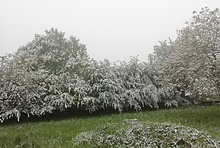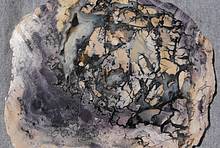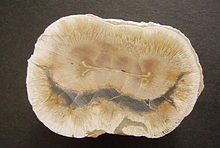Home PageAbout MindatThe Mindat ManualHistory of MindatCopyright StatusWho We AreContact UsAdvertise on Mindat
Donate to MindatCorporate SponsorshipSponsor a PageSponsored PagesMindat AdvertisersAdvertise on Mindat
Learning CenterWhat is a mineral?The most common minerals on earthInformation for EducatorsMindat ArticlesThe ElementsThe Rock H. Currier Digital LibraryGeologic Time
Minerals by PropertiesMinerals by ChemistryAdvanced Locality SearchRandom MineralRandom LocalitySearch by minIDLocalities Near MeSearch ArticlesSearch GlossaryMore Search Options
The Mindat ManualAdd a New PhotoRate PhotosLocality Edit ReportCoordinate Completion ReportAdd Glossary Item
Mining CompaniesStatisticsUsersMineral MuseumsClubs & OrganizationsMineral Shows & EventsThe Mindat DirectoryDevice SettingsThe Mineral Quiz
Photo SearchPhoto GalleriesSearch by ColorNew Photos TodayNew Photos YesterdayMembers' Photo GalleriesPast Photo of the Day GalleryPhotography
╳Discussions
💬 Home🔎 Search📅 LatestGroups
EducationOpen discussion area.Fakes & FraudsOpen discussion area.Field CollectingOpen discussion area.FossilsOpen discussion area.Gems and GemologyOpen discussion area.GeneralOpen discussion area.How to ContributeOpen discussion area.Identity HelpOpen discussion area.Improving Mindat.orgOpen discussion area.LocalitiesOpen discussion area.Lost and Stolen SpecimensOpen discussion area.MarketplaceOpen discussion area.MeteoritesOpen discussion area.Mindat ProductsOpen discussion area.Mineral ExchangesOpen discussion area.Mineral PhotographyOpen discussion area.Mineral ShowsOpen discussion area.Mineralogical ClassificationOpen discussion area.Mineralogy CourseOpen discussion area.MineralsOpen discussion area.Minerals and MuseumsOpen discussion area.PhotosOpen discussion area.Techniques for CollectorsOpen discussion area.The Rock H. Currier Digital LibraryOpen discussion area.UV MineralsOpen discussion area.Recent Images in Discussions
Mineralogical ClassificationMagnetite-Hematite-Martite

2nd Jun 2010 18:06 UTCIs Ras
I´m currently working as a junior geologist on an iron ore exploration project in South America. Recently, the team have been debating the importance and significance of paying close attention to mineral form of Fe particularly with regards to the initial surface meters. Our primary Fe-mineral is magnetite, found within a body of host rocks that include volcanogenic felsic rocks and andesites (termed so for their composition rather than their origin). Hematite is found in small quantities, particularly at the surface. But our team is struggling to diffrentiate between oxidation and weathering (I have argued that in this case the two are more or less one and the same, as the weathering we have is a chemical process which can also be defined as oxidation). What I would like to know is, how do we know if the occurence of martite indicates oxidation or weathering, and how do we differentiate this with the occurence of hematite at the surface (where it appears to also be a replacement mineral)? The red clays and soils that we have at the surface are surely hematite due to weathering of already present magnetite?
I welcome all opinions, it may seem trivial but it is a hot topic and one posing much confusion currently.
Regards,
Isabel

21st Jul 2010 13:29 UTCAlfredo Petrov Manager
21st Jul 2010 16:46 UTCReiner Mielke Expert
22nd Jul 2010 07:24 UTCMark Willoughby Expert
Martite is a psuedomorph of Hematite after Magnetite, not a weathering product. Therefore it is a chemical replacement of the Magnetite by Hematite, produced at depth and under pressure. It may be either a straight replacement process or an oxidation like process, but without depth and pressure the shape and form of the Magnetite would be lost. If the physical shape changed then it would be a replacement product not a psuedomorph and would not be called Martite.
Oxidisation of either Magnetite or Hematite can and does cause 'reddish' coloured sands, soils and clays; although so does the weathering of biotite from granite, which is actually more common.
Reiner is right about the Limonite too, Goethite is another possible result of Hematite or Magnetite oxidising. Although both are more of a complex chemical reaction than just basic oxidation, basic oxidation would just leave rust, or red soils.
You are right that oxidisation is a chemical weathering process; however oxidisation under pressure and depth is not a weathering process and is not quite the same.
And just as a note the felsic volcanic rock andesite was named for its occurrence in the volcanoes of the Andes Mountains, where it was first studied. The name is now just used for that type of rock anywhere it is found.
Martite does not suggest weathering, which we can gather from it being a psuedomorph. Other than the isotopes as Alfredo suggested, you will probably not be able to work out whether the surface Hematite is a product of oxidation/surface weathering or deeper oxidation during placement.
Do you know if you have a BIF type deposit or a simple placement deposit?
Knowing that, will give you some of the answers.
Cheers Mark.
23rd Jul 2010 10:09 UTCMarco E. Ciriotti Manager
Just published:
Hongyang Zhu, Yanzhang Ma, Haibin Yang, Cheng Ji, Dongbin Hou, Lingyun Guo (2010): Pressure induced phase transition of nanocrystalline and bulk maghemite (γ-Fe2O3) to hematite (α-Fe2O3). Journal of Physics and Chemistry of Solids, 71, 1183-1186.
http://www.sciencedirect.com/science?_ob=ArticleURL&_udi=B6TXR-4YKGJD7-7&_user=10&_coverDate=08%2F31%2F2010&_rdoc=1&_fmt=high&_orig=search&_sort=d&_docanchor=&view=c&_acct=C000050221&_version=1&_urlVersion=0&_userid=10&md5=19379a87e0939df46d2dc46eaff1ffc6
14th Aug 2010 08:06 UTCRalph S Bottrill 🌟 Manager

14th Aug 2010 09:16 UTCjacques jedwab
-Ferromagnetism is misleading, since some "hematites" (from Itabira BIF, notably) are attracted by the hand magnet. In the field, thunder strikes magnetize hematite outcrops.
-XRD is (or may be) misleading, since there is only one peak difference between martite and hematite.
I should suggest transmitted light microscopy of local, well determined and finely powdered materials. Polished sections under oil immersion, reflected light should also be helpful.
J.J.
14th Aug 2010 11:08 UTCRalph S Bottrill 🌟 Manager
23rd Oct 2010 02:49 UTCPeter Haas

19th Oct 2011 10:50 UTCDr.S.Niranjan Kumar

9th Jan 2012 08:30 UTCErskine.
I would like to know what causes the sparkling crystals in martite? Is it usually common with all martite formation? How does one visually differentiate between martite, magnetite, geothite, and limonite as all these can occur in oxidised environment.
Your comments would be much appreciated.

29th Jan 2012 21:07 UTCRussell Shapiro
This has been an interesting discussion to follow. I work on alteration due to both silica-leaching and oxidation enrichment (high-grad ore) and contact metamorphism. I am very keen on the hematite-magnetite-"martite" etc. pathways. I can add very little to this discussion except that in my experience, the iron oxides are very small (~1 um diameter) and disseminated. Under SEM, one can make out the magnetite shape of martite. Transmitted light with a 100x oil objective gets you close enough to make out subhedral mineral shapes. But, I rely on reflected light to distinguish hematite (including martite) from magnetite. Also, in my studies, it is most common under burial diagenesis and prehnite-pumpellyite conditions. Greenschist and higher leads to reduction and growth of magnetite.
Cheers,
Russell
(attached image of 1 um diameter bacterial filament from Biwabik Iron Range; transmitted plane polarized light)




Mindat.org is an outreach project of the Hudson Institute of Mineralogy, a 501(c)(3) not-for-profit organization.
Copyright © mindat.org and the Hudson Institute of Mineralogy 1993-2024, except where stated. Most political location boundaries are © OpenStreetMap contributors. Mindat.org relies on the contributions of thousands of members and supporters. Founded in 2000 by Jolyon Ralph.
Privacy Policy - Terms & Conditions - Contact Us / DMCA issues - Report a bug/vulnerability Current server date and time: April 23, 2024 20:33:29
Copyright © mindat.org and the Hudson Institute of Mineralogy 1993-2024, except where stated. Most political location boundaries are © OpenStreetMap contributors. Mindat.org relies on the contributions of thousands of members and supporters. Founded in 2000 by Jolyon Ralph.
Privacy Policy - Terms & Conditions - Contact Us / DMCA issues - Report a bug/vulnerability Current server date and time: April 23, 2024 20:33:29











